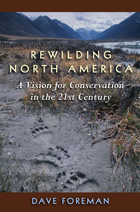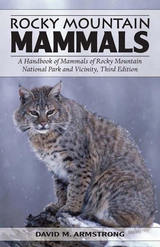3 start with R start with R

Americans have had a long-standing love affair with the wilderness. As cities grew and frontiers disappeared, film emerged to feed an insatiable curiosity about wildlife. The camera promised to bring us into contact with the animal world, undetected and unarmed. Yet the camera's penetration of this world has inevitably brought human artifice and technology into the picture as well. In the first major analysis of American nature films in the twentieth century, Gregg Mitman shows how our cultural values, scientific needs, and new technologies produced the images that have shaped our contemporary view of wildlife.
Like the museum and the zoo, the nature film sought to recreate the experience of unspoiled nature while appealing to a popular audience, through a blend of scientific research and commercial promotion, education and entertainment, authenticity and artifice. Travelogue-expedition films, like Teddy Roosevelt's African safari, catered to upper- and middle-class patrons who were intrigued by the exotic and entertained by the thrill of big-game hunting and collecting. The proliferation of nature movies and television shows in the 1950s, such as Disney's True-Life Adventures and Marlin Perkins's Wild Kingdom, made nature familiar and accessible to America's baby-boom generation, fostering the environmental activism of the latter part of the twentieth century. Reel Nature reveals the shifting conventions of nature films and their enormous impact on our perceptions of, and politics about, the environment.
Whether crafted to elicit thrills or to educate audiences about the real-life drama of threatened wildlife, nature films then and now reveal much about the yearnings of Americans to be both close to nature and yet distinctly apart.

In Rewilding North America, Dave Foreman takes on arguably the biggest ecological threat of our time: the global extinction crisis. He not only explains the problem in clear and powerful terms, but also offers a bold, hopeful, scientifically credible, and practically achievable solution.
Foreman begins by setting out the specific evidence that a mass extinction is happening and analyzes how humans are causing it. Adapting Aldo Leopold's idea of ecological wounds, he details human impacts on species survival in seven categories, including direct killing, habitat loss and fragmentation, exotic species, and climate change. Foreman describes recent discoveries in conservation biology that call for wildlands networks instead of isolated protected areas, and, reviewing the history of protected areas, shows how wildlands networks are a logical next step for the conservation movement. The final section describes specific approaches for designing such networks (based on the work of the Wildlands Project, an organization Foreman helped to found) and offers concrete and workable reforms for establishing them. The author closes with an inspiring and empowering call to action for scientists and activists alike.
Rewilding North America offers both a vision and a strategy for reconnecting, restoring, and rewilding the North American continent, and is an essential guidebook for anyone concerned with the future of life on earth.

Designed for quick reference and enjoyable reading, Rocky Mountain Mammals offers what most field guides don't - a wealth of fascinating information about each species. In seventy-two species accounts, David M. Armstrong describes each animal and its signs, habits, habitat, and natural history, noting times when seasonal events such as elk sparring occur.
Introductory materials and appendices offer rich context and wildlife-watching support, including a checklist with page numbers for quick field reference, an identification key, a glossary, derivations of scientific names, and advice on how, when, and where to watch mammals. Armstrong introduces mammalian evolution, anatomy, and distribution and offers perspective on how the local fauna fits into its geographical setting and into past and potential future faunas of the region.
This lavishly illustrated new edition will delight those who live in and visit the high country and foothills of the Southern Rockies and want to identify mammals and learn about their lives. Published in association with the Rocky Mountain Nature Association.
READERS
Browse our collection.
PUBLISHERS
See BiblioVault's publisher services.
STUDENT SERVICES
Files for college accessibility offices.
UChicago Accessibility Resources
home | accessibility | search | about | contact us
BiblioVault ® 2001 - 2024
The University of Chicago Press









